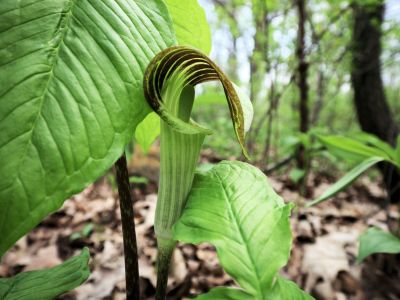About Jack-in-the-Pulpits
Jack-in-the-pulpit wildflower is native to the lower 48 states and parts of Canada. Native Americans harvested the roots for food, but they contain calcium oxalate crystals that cause blisters and painful irritations when eaten raw. To safely prepare the roots, first peel them and cut them into small pieces, then roast them at a low temperature for at least an hour. Growing jack-in-the-pulpit is easy in the right location. They grow wild in woodland environments and prefer a shady spot with moist or wet, slightly acidic soil that is rich in organic matter. These plants tolerate poorly-drained soil and make great additions to rain or bog gardens. Use Jack-in-the-pulpit in shade gardens or to naturalize the edges of woodland areas. Hostas and ferns make excellent companion plants.
How to Grow Jack-in-the-Pulpit
There is not much involved with growing Jack-in-the-pulpit plants. Plant container grown Jack-in-the-pulpit plants in spring or plant corms 6 inches (15 cm.) deep in fall. Plant seeds freshly harvested from ripe berries in spring. Plants grown from seeds have only one leaf the first year and it takes them three or more years to come to flower.
Caring for Jack-in-the-pulpit Wildflower
As easy as growing Jack-in-the-pulpit flower is, so is its care. The plant’s survival depends on a moist, organically rich soil. Work a generous amount of compost in to the soil before planting and fertilize annually with additional compost. Use organic mulch such as bark, pine needles, or cocoa bean shells, and replace it every spring. Jack-in-the-pulpit plants are seldom bothered by insects or diseases, but are very attractive to slugs. Hand picking, traps, and slug baits are the easiest ways to deal with these pests. Place hiding places, such as boards and upturned flower pots, in the garden as traps and check them early in the morning. Drop the slugs in a bucket of soapy water to kill them. Read the label on slug baits carefully and choose one that won’t harm children, pets, and wildlife. Knowing how to grow Jack-in-the-pulpit in the garden is a great way to enjoy the plant’s unique appearance throughout the season.
